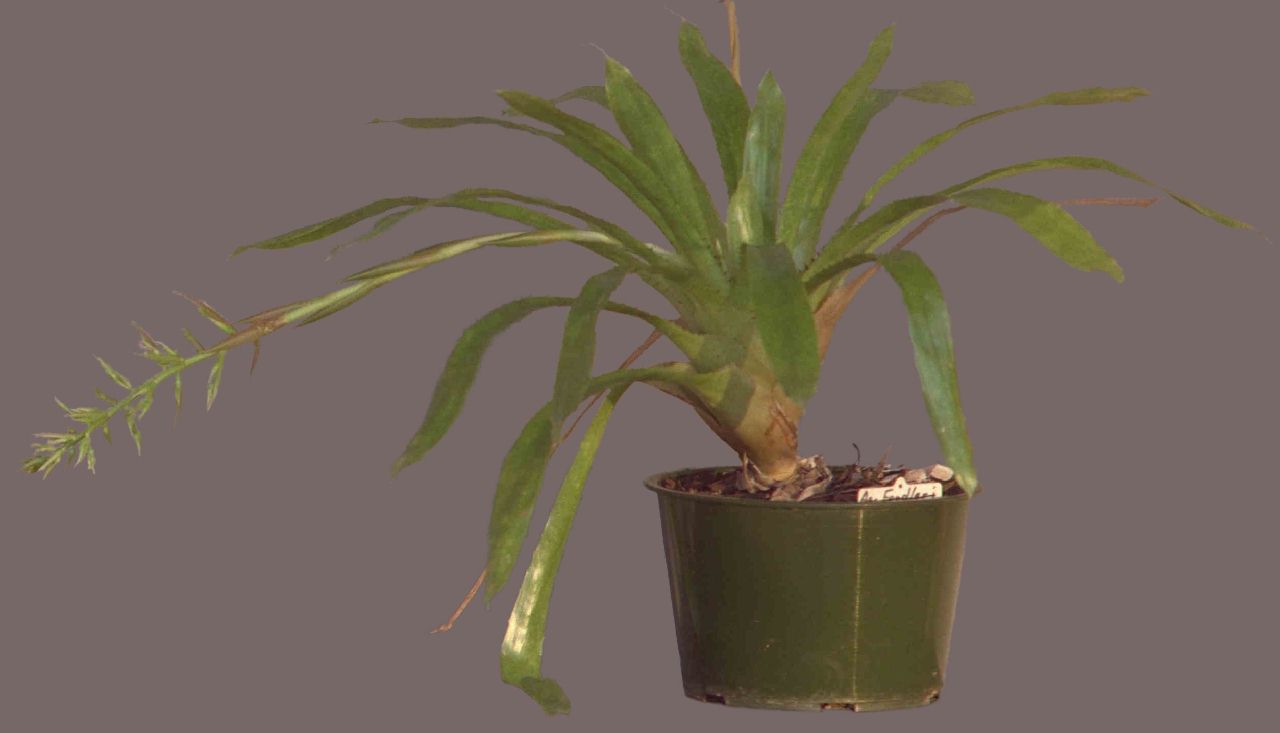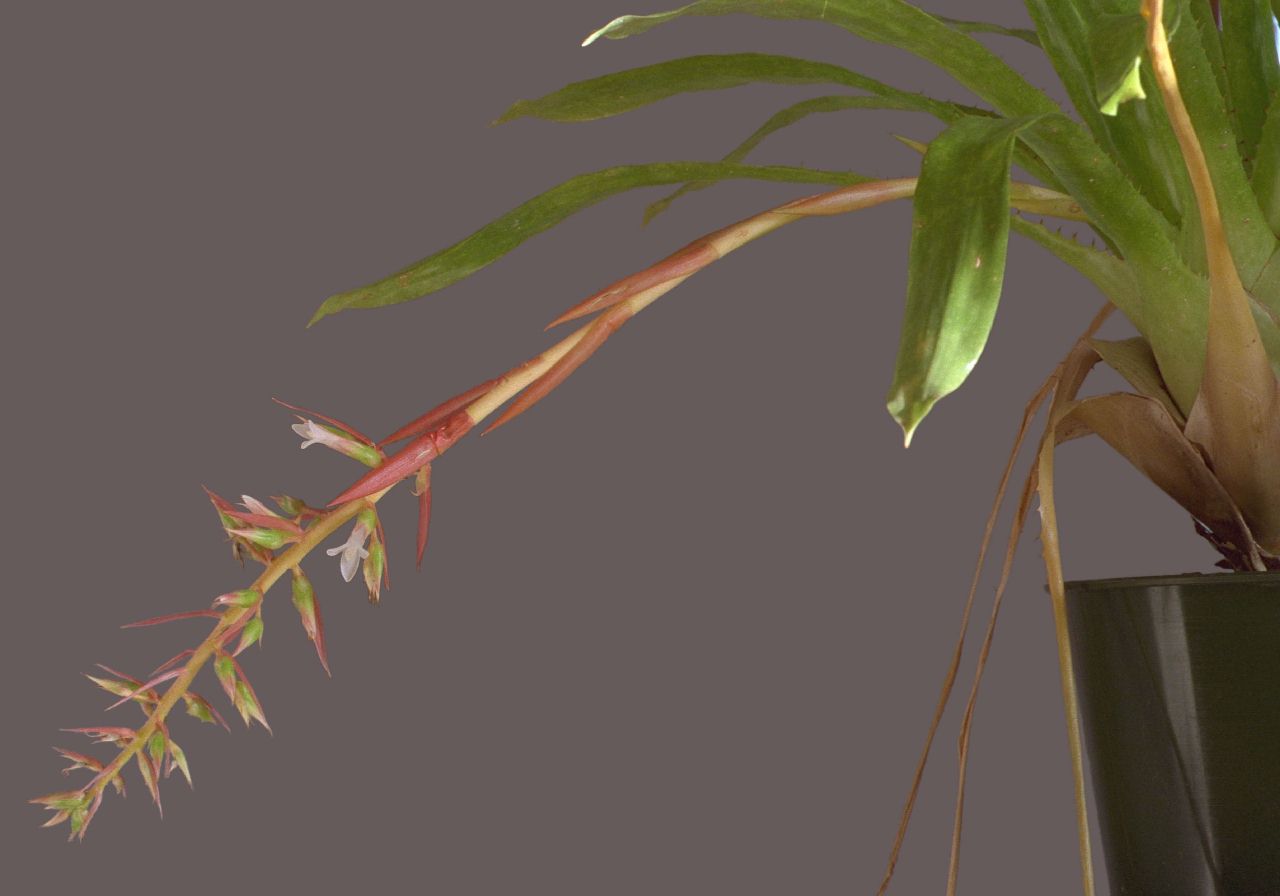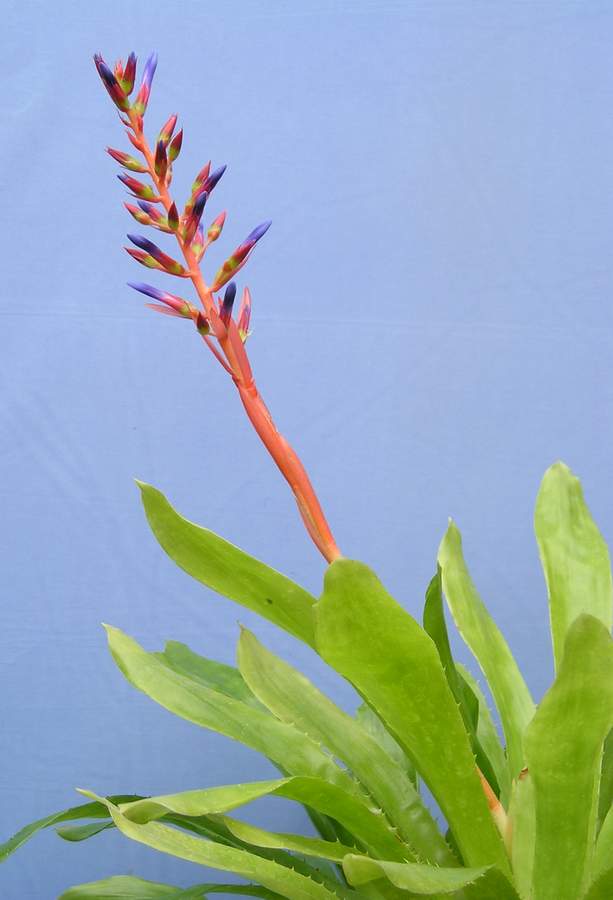



|
Aechmea azurea not A. fendleri, nor A. winkleri, nor A. araneosa by Derek Butcher 2001 In 1996, Peter Franklin of Raymond Terrace was pondering over a plant he had which had just flowered with white petals. Nothing strange about that, you may say! But he had received identical looking plants as Aechmea fendleri from Bill Morris and Aechmea winkleri from Marjory McNamara. Neither of these plant names are known for their white petals, but you can get albino plants. Using Smith and Downs, Peter found that the closest match was Aechmea azurea, but, as the name implies, this has blue petals He decided to put his thoughts to me and I put them to Harry Luther at the BSI Identification Centre. Harry’s answer was succinct; Aechmea azurea! Apparently Harry had come across this problem before, because the BSI Seed fund had offered Aechmea fendleri seed in the late 1970’s. This could be where Bill Morris got his plant originally. Plants raised from this seed offer turned out to be a weak white-flowered form of Aechmea azurea. Soon after Harry's advice, Peter's other plant flowered with blue petals therefore matching the description of Aechmea azurea. Why am I telling you this? The white-petalled plant is alive and well in other parts of Australia also, in fact, it has just cropped up again from Michael Romanowski in Melbourne under the name of A. araneosa. Someone has been trying desperately to identify this plant and yet it seems to be a plant not worthy of growing. If this saga of different names is occurring in Australia then it must also be occurring in the USA. The names could easily have been changed in the USA before the plants even reached these shores! So if you have a smallish plant whose scape and inflorescence falls over through a lack of oomph and whose name is A. fendleri, A. winkleri, or A. araneosa and with white petals, look towards A. azurea as its likely identity. If you are hoping that it will improve under your own loving care, I would advise it is not worthwhile persevering with.
{Ed note: I don’t know Derek, I actually quite like the little darling.} | |
Notes 13 Nov. 1996. Harry Luther says “20-25 years ago the BSI offered seed of A. fendleri. They turned out to be a poor white flowered form of A. azurea.”